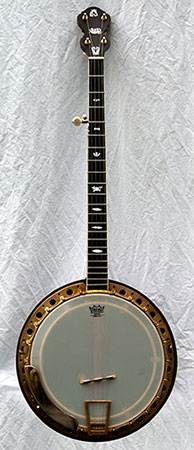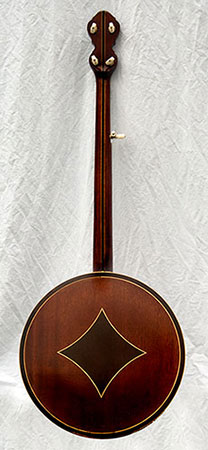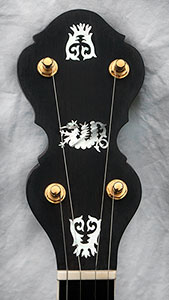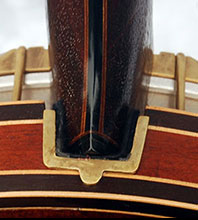


Barnes and Mullins
Lyratone, 1920s
This banjo originally belonged to a member of the Al Bowlly Band at the Savoy Hotel before the Second World War. The instrument stood neglected for a lot of years, and subsequently needed a bit of restoration to make it playable again. I'm assured "Barnes and Mullins" was stamped into the neck before the refret and refinish.A search of the internet turns up many mentions but few photographs of the Lyratone line. When Barnes and Mullins moved their offices in the Seventies, the early paperwork didn't make the move with them, so there's not much in the way of definitive information from B&M themselves. No-one there could tell me why there's a Welsh dragon on the peghead of this one (it's more commonly a lyre, for the obvious reason).
The pot assembly of this instrument is identical to this Essex Paragon Artist, so either Clifford Essex was making them for Barnes and Mullins, or both were going to the same source of hardware.


Photo credit: Me! This banjo is in my collection. Purchased on eBay November, 2011 for £175.
This banjo would made for the British dance band revolution of the 1920s and '30s. It was designed for jazz and big band styles -- but then, so were the early American resonator banjos that bluegrass was invented on.
An all-around excellent instrument. One of the best I've played, and my current favorite.
Get in touch! I'm writing these up from memory, word of mouth and internet searches — not the most reliable sources. I'd love to hear your thoughts, corrections, additions...and, oh boy, if you have an interesting British banjo to share, please do.